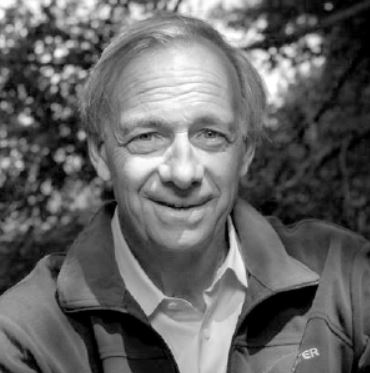What I Learned From The World’s No. 1 Hedge Fund Guru
In 1975, a young man named Ray Dalio founded, out of his apartment, investment management firm Bridgewater Associates. Today, it is the largest hedge fund in the world with about $160 billion in assets under management (larger than No. 2 and No. 3 combined).
Bridgewater has consistently outperformed its peers. The hedge fund’s flagship Pure Alpha fund has reportedly delivered an average annual return of 13% after fees since its inception in 1991. He even made money during the last financial crisis.
| —Recommended Link— |
| Wall Street Elites Collude With Media To Cover Up Breakthrough Discovery Scientists just uncovered a “test tube miracle” that will revolutionize the marijuana industry. But the media has been strangely silent about it. Don’t let Wall Street insiders step on you again. Every $1,000 stake could turn into $61,770… but only if you take action before this discovery hits the evening news. Click here for details. |
Worried about the enormous amount of debt on many of the large institutions’ balance sheets, Dalio decided to take his findings — and warnings — to the Treasury Department, where he presented his research in December 2007. He later went to the White House after Treasury spurned his theory. He once again explained that he believed the banking system was under great stress and was bound to lose an enormous amount of money, which would, in turn, have a detrimental effect on the economy.
| Source: Principles.com |
Dalio’s warnings were once again ignored. But suffice it to say that while almost all of his peers were losing money hand over fist, Dalio’s fund turned a profit in 2008.
Dalio shred his success secrets in his recent book, “Principles” (a sort of revision of his 2011 investing manifesto). These “principles” are Dalio’s investing guidelines… the rules he’s carefully followed that helped him amass enormous wealth for him and his clients.
Note that even the world’s largest, and arguably most successful, hedge fund abides by some sort of investing rules. Although Dalio doesn’t outline his exact “buy” and “sell” signals in the book, he talks considerably about the philosophy that has made him so successful. (You can find a really good exerpt on Bridgewater’s website here.)
What we do know is that Dalio uses a system to scan the world for investment opportunities across numerous asset classes and has buy and sell signals built into his model. If this sounds familiar, that’s because it’s exactly what we do in my premium service, Maximum Profit.
It’s Time To Step Out Of Your Comfort Zone
One of Dalio’s top philosophies struck a chord with me concerning not only the market, but with successful investing (and life) in general.
According to Dalio, one of the biggest reasons people aren’t successful is due to being close-minded. He believes that in order to be truly successful, you need to be “radically open-minded.”
You see, what we do in Maximum Profit isn’t the “typical” investment approach. We use a rigorously-tested system to identify stocks, and then it tells us when to buy and when to sell. The two indicators are some of the most thoroughly researched concepts in finance: momentum and cash flow. Granted, system- and momentum-based investing is beginning to become more common, but for most investors it’s still unfamiliar territory. And the fear of the unknown is what keeps people from taking that next step.
I was originally skeptical of “momentum” investing. I started my career in finance learning the typical framework of fundamental analysis, modern portfolio theory and efficient market hypothesis. Of course, these are all things that I needed to learn and understand, but there was always this great divide among the industry between “value investors” and “technical investors.”
But over the years of seeing just how successful momentum and rules-based investing can be, I’ve grown to become quite passionate about this approach. Of course, I haven’t dismissed value investing altogether, either. In fact, I believe that value investing and momentum investing can work side by side — and the Maximum Profit system is a testament to that (cash flow is a vital fundamental indicator in the system’s algorithm).
Action To Take
My point is that investors should be willing to try new things. The more tools you have at your disposal, the better. Remember Dalio’s principle of keeping a “radically open mind.”
My advice: Consider stepping out of your comfort zone. Try something different than the routine strategy of “buy and hold” that most investors subscribe to. Once you open your mind to alternative investment strategies, you’ll have a leg-up on the average investor.
If you’d like to learn more about my system and how it works, then check out this special report. You’ll also have the chance to get the system’s latest “buy” signals sent straight to your inbox.

